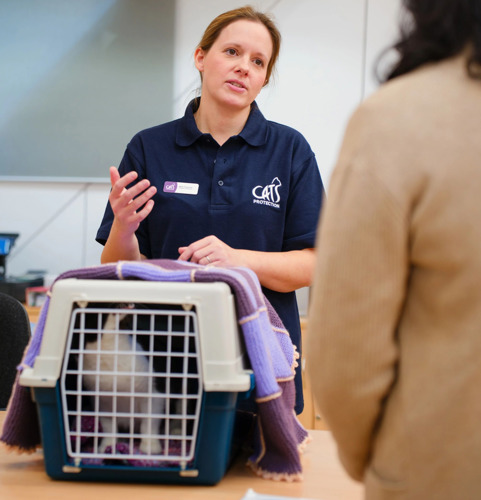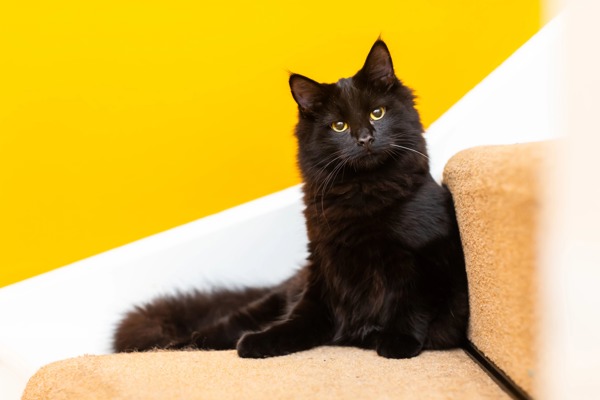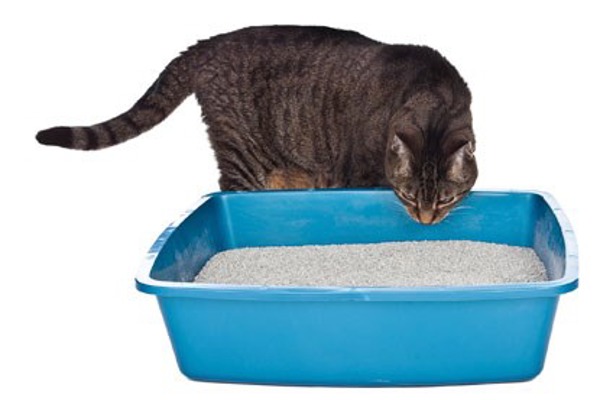Discover expert advice for choosing the best cat carrier for your cat and find out why backpack cat carriers aren’t safe.
A cat carrier is an essential piece of equipment for your cat, as you will need to use it to transport them to the vet for regular checkups and in case of emergencies.
Cats like their home comforts and familiar territory so they can find travelling stressful. Therefore you should only travel with your cat for essential reasons, such as for trips to the vet or cattery, or moving home.

When travelling, your cat should remain shut inside a suitable cat carrier at all times to keep them safe. It’s a good idea to make sure they are microchipped and the microchip details are up to date before you set off, just in case they escape and get lost while you’re on the move.
There are lots of different types of cat carriers available so read our guide on choosing the kind of carrier cats like best and the ones vets recommend.
The best cat carrier
The best type of cat carrier to use will have the following features.
- Made from metal wire or plastic. Cat carriers made from these materials will be strong and secure to keep your cat safe yet lightweight enough for you to carry while your cat is inside. They are also easy to clean in case your cat has any accidents inside the carrier. You can line the bottom of the carrier with paper, a towel or a blanket to make it more comfortable for them, and spray this with a pheromone diffuser such as FELIWAY® 15 minutes before your cat goes in the carrier to help them feel safe
- Big enough for cat to stand up and lie down comfortably. Your cat should have enough room to stand up, lie down and adjust their position inside the carrier, but it should also be snug enough that they don’t fall about inside while travelling. Cats come in all different shapes and sizes, so make sure the carrier is the right size for your cat. As a general guide, try to make sure the carrier is a few centimetres taller and longer than the height and length of your cat when they are standing. Remember the size of carrier you buy them to use as a kitten may be too small for them as an adult cat.
- Opens from the front and top. The ideal carrier will have a door at the front that your cat can use to get in and out, but also open from the top so that you can lower your cat into the carrier if they are reluctant to get inside by themselves. This also allows your vet to open the top and examine your cat while they are still inside the carrier. Ideal for nervous cats who are reluctant to come out of the carrier at the vets!
- Has ventilation. The carrier should have openings or vents on at least two sides, allowing air to circulate inside the carrier. This will prevent your cat from overheating or suffocating inside the carrier
Find more advice on how to choose and use a cat carrier.

Are soft carriers safe for cats?
Soft carriers made from fabric instead of hard plastic or metal wire are not recommended. The flimsy material is not as safe because cats could claw or bite the fabric and rip it open to escape, and if anything fell on or against the carrier your cat may get injured. They could also be more difficult to clean properly if your cat has an accident inside the carrier.
Can I carry my cat in a backpack?
Carrying your cat in a backpack-style carrier is not recommended. These backpacks are not big enough for cats to stand up, lie down and readjust their position in so are very uncomfortable for them. Cats shouldn’t be carried around for long periods of time, or taken to new and unfamiliar locations unless absolutely necessary for their health and wellbeing. Walking around with the backpack on your back will cause it to move around quite a lot, which will be stressful for your cat. If you’re worried about leaving your cat at home on their own, rest assured that they will be much happier staying in their familiar surroundings. You could also arrange for someone to check in on them to make sure they’re ok. Find out how long you can leave your cat alone for.
Can I take my cat for a walk on a harness?
Taking your cat for a walk on a harness and lead is not recommended. Cats prefer the freedom to be able to explore on their own and often find wearing a harness and being restrained on a lead very stressful. Find out more about cat harnesses and how you can help your cat to explore outdoors safely.
Can I take my cat on public transport?
When travelling with your cat, the best option is to travel by car. If you don’t have access to a car, you could ask family or a friend to take you, or book a taxi, but make sure they are willing to accept pets on board. You may be able to find a local pet-specific taxi in your area. Keep your cat in their carrier at all times while in the car, and secure the carrier to the backseat with a seat belt to prevent it from moving around.
In the UK, each train passenger is allowed to travel with up to two pets without paying extra. On UK busses, it is up to the driver whether pets are allowed on board, depending on how busy the bus is and whether there are other animals travelling.
Public transport can have many different smells and sounds, unfamiliar people and other animals that might scare your cat. If you need to take your cat on public transport, try to travel outside of peak times. Keep your cat inside their carrier and keep the carrier as close to you as possible at all times. You can also cover the carrier with a light blanket to help prevent your cat from becoming overstimulated and stressed by everything going on around them. Find more advice about travelling with your cat.



